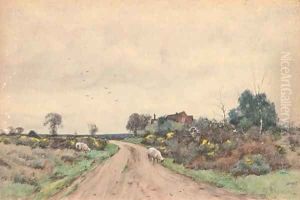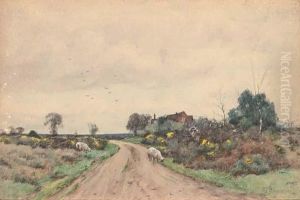John Mackintosh Mackintosh Paintings
John Mackintosh Mackintosh, born in 1893, remains a less-known figure in the realm of Scottish art, yet his contributions and unique style have gradually garnered recognition among art historians and enthusiasts. His life, though brief, was marked by an intense dedication to exploring the realms of symbolism and the Celtic Revival, movements that sought to capture the essence of Celtic and Scottish identity through visual arts, literature, and cultural revival during the late 19th and early 20th centuries. Mackintosh's work, characterized by its intricate detail, mystical themes, and a profound sense of national pride, offers a window into the cultural renaissance that sought to define Scottish identity in a new era.
Mackintosh's artistic journey was deeply influenced by the broader Celtic Revival movement, which aimed to rediscover and celebrate the ancient Celtic cultures of Scotland, Ireland, and Wales. This movement, part of a wider European interest in national folklore and traditions, provided a fertile ground for Mackintosh's development as an artist. He was particularly drawn to the symbolic potential of Celtic motifs, mythologies, and landscapes, which he integrated into his work with a modern sensibility that reflected the contemporary search for national identity and cultural distinctiveness.
Despite his premature death in 1927, Mackintosh's legacy lies in his ability to blend the mystical and historical aspects of Celtic culture with a modern artistic vocabulary. His works, though not widely known during his lifetime, have been reassessed in recent years as significant contributions to the Celtic Revival and Scottish art. They resonate with the themes of identity, tradition, and transformation, echoing the broader cultural shifts occurring in Scotland and across the Celtic nations during his time.
Today, John Mackintosh Mackintosh's art is celebrated for its depth, beauty, and cultural significance, capturing the imagination of those who seek to understand the complexities of Scottish identity and the power of art to explore and express cultural heritage. His life and work stand as a testament to the enduring appeal of the Celtic Revival and its impact on the development of modern Scottish art.

